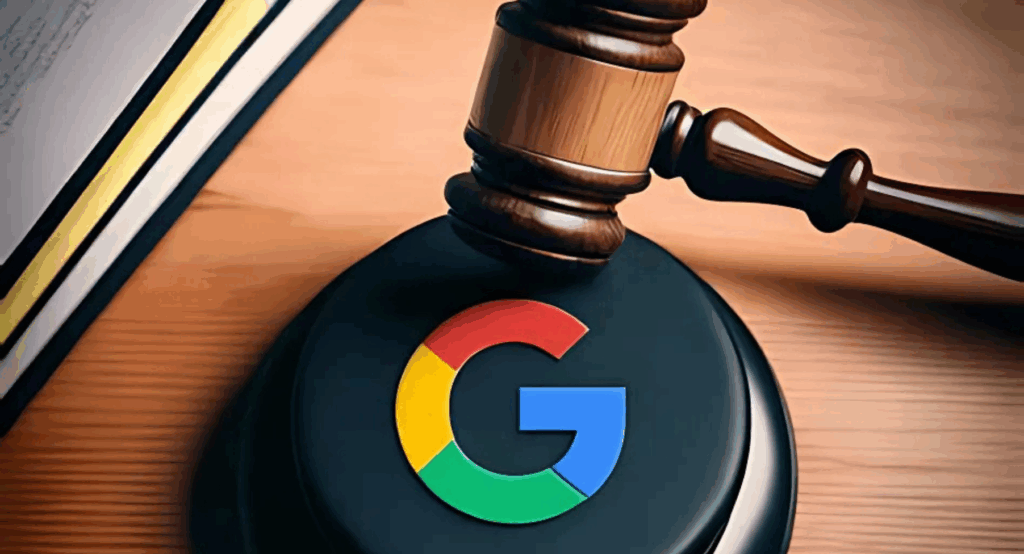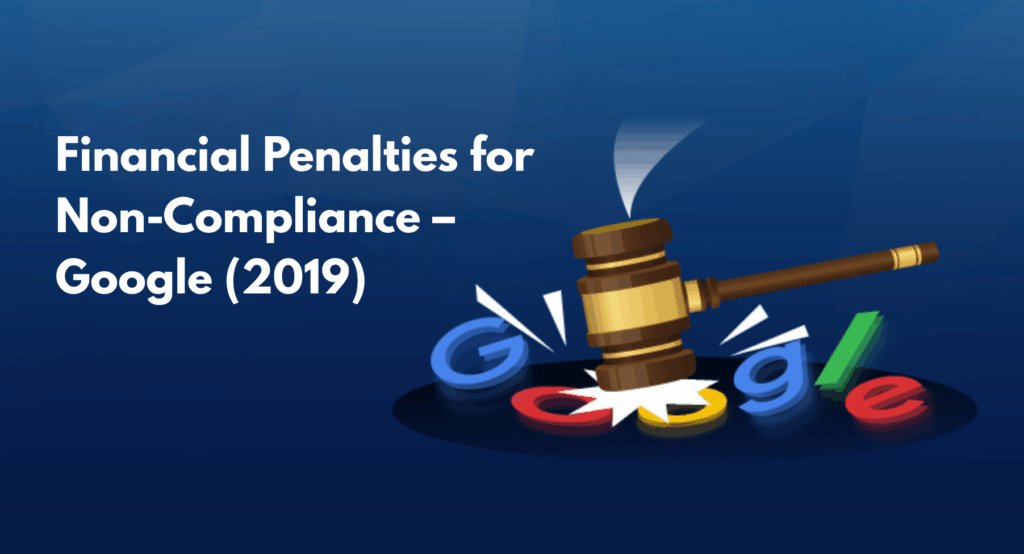Financial Penalties for Non-Compliance – Google (2019)
6 Powerful Compliance Lessons for Data-Driven Enterprises
What Happened: Google’s €50M GDPR Fine by CNIL
In January 2019, Google was fined €50 million by France’s data protection authority CNIL for violations of the General Data Protection Regulation (GDPR). This marked the first major fine under GDPR and signaled aggressive enforcement by European regulators.
Key violations identified by CNIL included:
- Lack of transparency: Users could not easily understand how Google processed their personal data for ad personalization.
- Inadequate user consent: Data collection relied on pre-checked boxes and did not meet GDPR’s standards of “freely given, specific, informed, and unambiguous” consent.
The ruling highlighted the complexity of ensuring compliance across large, multi-service digital platforms.

Financial and Reputational Impact
Though €50 million was modest in relation to Google’s revenues, the broader effects included:
- Reputational Blow: European users and regulators viewed Google’s data handling with skepticism.
- Increased Scrutiny: It attracted attention from other EU watchdogs and global privacy advocates.
- Product Reevaluation: Teams were forced to reconsider design assumptions and consent mechanics.
Leadership Response and Company-Wide Overhaul
Google took decisive steps following the penalty to align its operations with GDPR:
- Data Governance Framework: A centralized structure was implemented to unify data policies across products and services.
- Consent Management Redesign: User interfaces were overhauled to provide clearer, more granular consent options.
- Privacy Engineering Teams: Cross-functional units were created to bake compliance into product development lifecycles.
Implementation Timeline
- Phase 1: Audit of existing data flows and user consent mechanisms
- Phase 2: Design and testing of new privacy dashboards and consent UIs
- Phase 3: Alignment across all business units, followed by internal and external reviews
Competitive Advantage Achieved
Google’s rapid reforms positioned it as a GDPR compliance leader, yielding multiple benefits:
- Enhanced User Trust: Privacy dashboards became key trust-building tools.
- Stronger EU Market Positioning: Compliance smoothed regulatory relations and avoided future fines.
- Product Differentiation: Ad tools and platforms highlighted “privacy by design” features, winning over privacy-conscious advertisers.
What IT Leaders Must Learn: 6 GDPR-Driven Compliance and Trust Strategies
1. Build a Unified Data Governance Framework
What Went Wrong:
Best Practices for IT Leaders:
- Appoint Data Governance Leaders: Empower a Chief Privacy Officer or equivalent at the enterprise level.
- Unify Data Policies: Standardize privacy policies, consent flows, and audit trails across services.
- Integrate Compliance into Development: Embed data privacy checklists into DevOps and CI/CD pipelines.

2. Design Consent with User Clarity and Control
What Went Wrong:
Best Practices for IT Leaders:
- Simplify UI: Present clear, action-based consent options (opt-in, opt-out, customization).
- Separate Consent by Purpose: Allow users to accept/reject different data uses independently (e.g., ads vs. analytics).
- Audit Consent Logs: Log every consent action for traceability and legal validation.
3. Conduct Multi-Level Privacy Audits
What Went Wrong:
Best Practices for IT Leaders:
- Data Mapping: Identify where personal data is stored, processed, and transferred.
- Risk Scoring: Assign a privacy risk score to every application and service.
- Third-Party Validation: Use external auditors for unbiased reviews and compliance certification.
4. Empower Cross-Functional Privacy Engineering Teams
What Went Wrong:
Best Practices for IT Leaders:
- Privacy by Design Champions: Train privacy-focused engineers in each department.
- Sprint-Based Compliance Reviews: Evaluate privacy impact at the end of every sprint cycle.
- Documentation Culture: Maintain version-controlled privacy documentation for features and processes.
5. Implement Real-Time Privacy Dashboards
What Went Wrong:
Best Practices for IT Leaders:
- User Portals: Provide easy access to data settings, download requests, and account preferences.
- Activity Transparency: Log how, when, and where data is used (e.g., device, location, time).
- Feedback Loops: Let users report concerns or make changes in real time.

6. Embed Compliance Metrics in Product KPIs
What Went Wrong:
Best Practices for IT Leaders:
- Privacy KPIs: Track percentage of products with compliant consent flows.
- Reward Privacy Innovation: Recognize teams that design user-centric privacy features.
- Board-Level Reporting: Present compliance metrics to senior leadership quarterly.
Conclusion: From Compliance Burden to Strategic Enabler
The €50 million GDPR fine served as a wake-up call not only for Google but for the entire tech industry. It showed that privacy is no longer a backend function—it’s a front-end experience and a business differentiator.
For IT leaders, the path is clear:
- Design with transparency
- Audit with precision
- Lead with accountability
When organizations integrate privacy into their core architecture, they don’t just avoid fines—they earn long-term customer loyalty and future-proof their operations.

Let YALLO Solve Your Talent Challenges
Struggling with complex IT needs? Partner with YALLO for tailored solutions that reduce costs, improve quality, and deliver results. Book an appointment today to discuss how we can help your business thrive.














